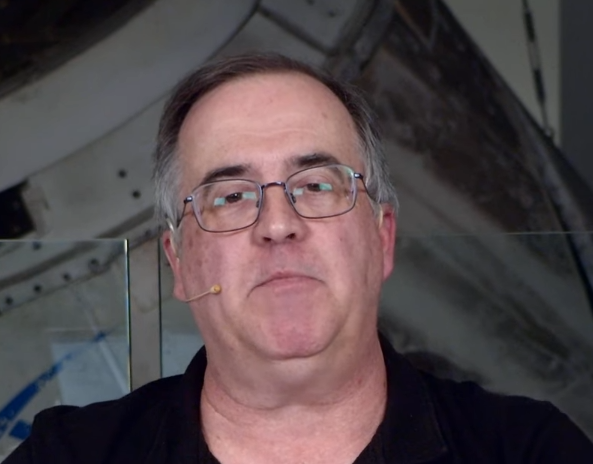- 0 Posts
- 7 Comments

 1·2 months ago
1·2 months agoI agree that the idea of launching an object into the sun like an arrow or a bullet is not necessary. I have said so repeatedly. Also, the NASA scientists are correct. You must spend energy to change an orbit. They do not decay spontaneously. I’m happy you can take some comfort in the knowledge that, when the sun grows large enough to smash into the earth - not when the orbit destabilizes - you will in some sense have been correct. Wait long enough, and the sun will fall into you.

 1·2 months ago
1·2 months agoPlease recall, the math guys that NASA hired agree with what I’m saying.
https://youtu.be/nSDFkQp-B7Y?feature=shared
Yes, I am saying that the stable orbit that the earth is in, and any number of alternative orbits, are easier to achieve than the extremely small number of possible orbits which intersect the surface of the sun. There are far more orbits that don’t touch it than orbits that do. To achieve the specific orbit which does touch it is still possible. You would accomplish it by accelerating to 108,000 km/h opposite of the earth’s current orbital velocity.
The word “eventually” carries a lot of your weight in this argument. Technically, eventually, the earth will fall into the surface of the sun. This will happen because the sun expands to become a red giant in 7.5 billion years. The earth will not need to change its orbit to touch the sun, because the sun will reach out to touch it.
https://en.wikipedia.org/wiki/Future_of_Earth
Until then, for the next 7.5 billion years, the orbit of earth and everything on it will remain stable unless acted upon by an outside force. An object in orbit is an object at rest, remaining at rest, following Newton’s first law. In its own inertial reference frame, “at rest” means continuing in its stable orbit. To do otherwise would require an equal and opposite reaction, i.e. propellant. This is not controversial.

 1·2 months ago
1·2 months agoThe reason I can keep producing articles that agree with me, but you can’t, is that I am correct.
Conservation of momentum is a fundamental law of the universe. The earth and every object on it have a large momentum with velocity perpendicular to the axis between the earth and the sun. That momentum can’t just disappear. For an object moving in a stable orbit to transition into a collision course, the momentum carrying it sideways, away from collision, must be counteracted, or else it will continue to do what it was already doing: orbiting instead of colliding. It’s Newton’s first law.
It has nothing to do with how fast you get to the sun. It’s about getting to the sun at all. Whether in 1 year or 100,000. Say you give an object the small nudge you keep talking about. Cancel just a little of the sideways velocity, and the object will veer a little bit toward the sun… then pass it at a slightly smaller distance than the original orbit. You’ve turned an essentially circular orbit into a more elliptical orbit. Still not a collision course. Comets can have hugely elliptical orbits, but still without ever colliding with the sun. Cancel more of the sideways motion, and the orbit becomes even more elliptical. It passes closer to the sun at perigee, and farther at apogee, but still doesn’t hit it. The only way it hits is if you cancel so much of the sideways motion that the orbit becomes so elliptical that the distance at perigee is smaller than the radius of the sun. Then the orbit intersects the sun’s surface, and a collision occurs. Which is exactly what I’ve been describing.
You keep talking about putting it into an “unstable orbit.” Fine, such things exist, but the energy to destabilize them still doesn’t come from nowhere. Satellites orbiting the earth can become unstable and fall in due to dragging against the atmosphere. The friction converts the orbital velocity to heat, so you don’t need to use propellant to achieve it, but conservation laws still apply, so the orbital velocity still needs to be lowered by some force for the orbit to change. We are too far from the sun to drag against its atmosphere significantly. Maybe enough to hit the sun in billions of years, if you really don’t mind waiting.
Or, in a system of multiple orbiting objects, like a solar system, you can cancel out some of your orbital velocity and hit the sun by using the gravity of one of the other planets as a brake, robbing the planet of a tiny bit of its momentum to stop your own, satisfying the conservation law. That can also achieve the kind of orbit you want. The solution doesn’t absolutely have to be propellant, but it absolutely cannot rely on free energy, and it can’t be expected to happen by accident. You would still need to carefully arrange your slingshot maneuver with the other planets to cancel your orbital velocity out nearly perfectly, if you wanted your orbit to intersect the surface of the sun, or else you would only ever succeed in merely changing the shape of your ellipse.

 1·2 months ago
1·2 months agoBut even though the Sun has such a powerful pull, it’s surprisingly hard to actually go to the Sun: It takes 55 times more energy to go to the Sun than it does to go to Mars.
Why is it so difficult? The answer lies in the same fact that keeps Earth from plunging into the Sun: Our planet is traveling very fast — about 67,000 miles per hour — almost entirely sideways relative to the Sun. The only way to get to the Sun is to cancel that sideways motion.

 0·2 months ago
0·2 months agoEven without actively accelerating toward the sun, something starting on earth is already orbiting the sun at about 100,000 km/h. You’d have to cancel that out by accelerating the same amount in the opposite direction just to be able to fall into the sun’s gravity well instead of continuing to orbit. That would take quite a bit of propellant.

Rhythmic? No, not really. More exciting if the musician could somehow anticipate this fundamentally unpredictable event? Absolutely.